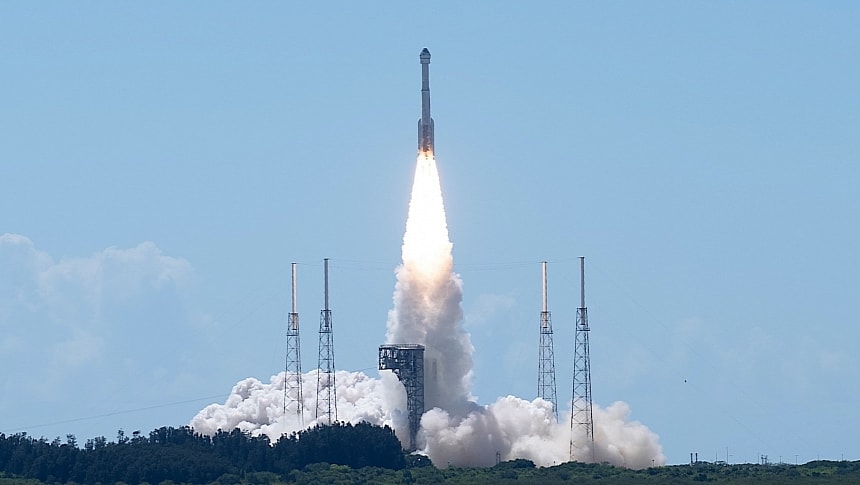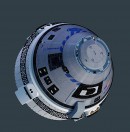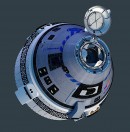It's been a rough ride getting here, but finally America's second commercial spacecraft managed to get itself off the pad and into space on Thursday. Carried outside the planet's atmosphere by a United Launch Alliance (ULA) Atlas V rocket, the ship is now circling our world as it gets ready to dock with the International Space Station (ISS).
Starliner departed the Space Launch Complex-41 pad at Cape Canaveral Space Force Station in Florida at 10:52 AM EDT, carrying with it two American astronauts, Butch Wilmore and Suni Williams. They both safely reached orbit shortly after.
The last update we got from Boeing regarding the state of the ship and crew was about five hours ago from the time of writing. Mission controllers informed us that the two NASA astronauts have entered their sleep period, which is scheduled to end a few hours from now, at 4.30 AM EDT.
Before tucking themselves in, the two performed a series of tests on the Starliner spaceship, including by manually piloting it. For about a couple of hours or so, the crew used a hand controller to point and aim the spacecraft, and the initial results seem to be very satisfying: the Starliner controls great, even better than in the simulator.
A far-field demo was also conducted, with the ship pointed toward the Earth. This maneuver allowed the communications antenna to be pointed at Tracking and Data Relay Satellites (TDRS). Then, the solar array was positioned to point at the Sun, in case the internal batteries need to be charged.
After being pointed at Earth, the ship was spun around to face the stars. This move allowed the "star trackers in the VESTA system to establish their attitude in space in case all three flight computers were to ever go out or be turned off at the same time."
Some acceleration and deceleration maneuvers were also conducted to raise and lower the ship's orbit. This test was a rehearsal for the unlikely scenario that the crew needs to manually break away from the space station orbit during rendezvous, if such a thing were to become necessary.
The final test had the ship position for re-entry, a practice run that may come in handy if an emergency would require such a maneuver.
The Starliner is scheduled to dock with the ISS later on June 6, and NASA promises more manual piloting skills will be demonstrated at that time. The estimated time of the ship's arrival at the Harmony module is 12:15 PM EDT.
Starliner's stay in space is scheduled to last about a week. In the days to follow, the crew will give the world a tour of the Starliner (June 8), speak to the students from Sunita L. Williams Elementary School in Needham, Massachusetts, (June 10), and then do the same with students from Tennessee Tech University (June 11).
The last update we got from Boeing regarding the state of the ship and crew was about five hours ago from the time of writing. Mission controllers informed us that the two NASA astronauts have entered their sleep period, which is scheduled to end a few hours from now, at 4.30 AM EDT.
Before tucking themselves in, the two performed a series of tests on the Starliner spaceship, including by manually piloting it. For about a couple of hours or so, the crew used a hand controller to point and aim the spacecraft, and the initial results seem to be very satisfying: the Starliner controls great, even better than in the simulator.
A far-field demo was also conducted, with the ship pointed toward the Earth. This maneuver allowed the communications antenna to be pointed at Tracking and Data Relay Satellites (TDRS). Then, the solar array was positioned to point at the Sun, in case the internal batteries need to be charged.
After being pointed at Earth, the ship was spun around to face the stars. This move allowed the "star trackers in the VESTA system to establish their attitude in space in case all three flight computers were to ever go out or be turned off at the same time."
Some acceleration and deceleration maneuvers were also conducted to raise and lower the ship's orbit. This test was a rehearsal for the unlikely scenario that the crew needs to manually break away from the space station orbit during rendezvous, if such a thing were to become necessary.
The final test had the ship position for re-entry, a practice run that may come in handy if an emergency would require such a maneuver.
The Starliner is scheduled to dock with the ISS later on June 6, and NASA promises more manual piloting skills will be demonstrated at that time. The estimated time of the ship's arrival at the Harmony module is 12:15 PM EDT.
Starliner's stay in space is scheduled to last about a week. In the days to follow, the crew will give the world a tour of the Starliner (June 8), speak to the students from Sunita L. Williams Elementary School in Needham, Massachusetts, (June 10), and then do the same with students from Tennessee Tech University (June 11).
Liftoff! Go #AtlasV! Go Centaur! Go #Starliner!
— Boeing Space (@BoeingSpace) June 5, 2024
Godspeed, Butch Wilmore and @Astro_Suni! pic.twitter.com/kTA8fjcLP7




















